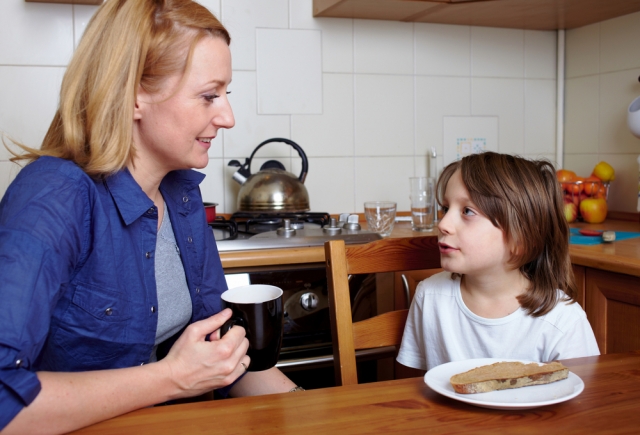A Subtle Yet Simple Way to Improve Dental Treatment Acceptance Rates
By Kevin Kwiecien on October 28, 2015 | Imagine, if you will, that you’re once again a child and your mother wants you to drink your milk. There are multiple ways in which this conversation could go.
Imagine, if you will, that you’re once again a child and your mother wants you to drink your milk. There are multiple ways in which this conversation could go.
“Drink your milk.”
“But Mom, why?”
“Because I told you to. That’s why.”
Or …
“Do you want water or milk with dinner?”
“I guess I’ll have milk.”
“Ok, drink it all. You picked it.”
Or …
“You are a growing child. I know that your bones need calcium to be strong. Milk has a lot of that. Would you like milk, juice or water with dinner?”
“Juice, please.”
“Ok, I’m happy to get you juice. I was also thinking that you had mentioned that you were worried about your knees and shin splints from running and your sore muscles from pitching on both baseball teams. Which do you think might help you feel better, especially long-term?”
“I’ll have a big glass of milk, please.”
Yes, the last conversations took a little longer. It also contained some dialogue that help the child understand the right choice. But notice that, in the end, the mother didn’t even have to tell the child to drink the milk.
If you hired a dental consultant for your practice, would you rather the consultant take the time to understand your practice with you or evaluate your practice independently, without your insights and history?
Would you rather the consultant offer a plan for future changes based off of what he or she found alone and/or based on what has worked for other practices? Or would you rather the consultant offer a plan with which you could identify, based on what you learned together?
Would you be more inclined to spend time and energy on a plan that worked for others based on “I told you so?” Or would you have more energy and find more time for the plan that you helped create with an understanding of why it was created?
 The same scenario can exist with our dental patients. Bob Barkley coined the term, “co-diagnosis.” The term is used mostly with patient care, which can create a different mindset or anxiety around it. We often let it become a mysterious concept or skill that only the elite eventually possess. Really, co-diagnosis not that at all. Just by taking the time to learn about our patients’ concerns, signs, and symptoms with them (as opposed to charting and documenting our findings with our assistant) and being curious or concerned about what might have caused the signs or symptoms (as opposed to telling them they are broken or diseased and where), and finally by having a conversation about long-term intentional health (as opposed to a treatment plan that we were brilliant enough to create alone), we are co-diagnosing or “co-discovering” with the patient what is most appropriate for them.
The same scenario can exist with our dental patients. Bob Barkley coined the term, “co-diagnosis.” The term is used mostly with patient care, which can create a different mindset or anxiety around it. We often let it become a mysterious concept or skill that only the elite eventually possess. Really, co-diagnosis not that at all. Just by taking the time to learn about our patients’ concerns, signs, and symptoms with them (as opposed to charting and documenting our findings with our assistant) and being curious or concerned about what might have caused the signs or symptoms (as opposed to telling them they are broken or diseased and where), and finally by having a conversation about long-term intentional health (as opposed to a treatment plan that we were brilliant enough to create alone), we are co-diagnosing or “co-discovering” with the patient what is most appropriate for them.
It might take an uncomfortable conversation – for you, the patient or both – or a few more minutes of time, but it’s obvious to them when it’s coming from the right place. Patients will almost always appreciate that. My mom did it with me. My consultant did it with me. We can do it with our children. We can do it with our team. And we can do it with our patients.
The more we practice this amazing gift at every level or within all facets of our lives, the more it becomes part of who we are. Help your patients pick the milk. They’ll drink it on their own.
(Enjoy this article? Click this link for more content from Dr. Kevin Kwiecien.)
Kevin Kwiecien, D.M.D., M.S., Spear Faculty and Contributing Author